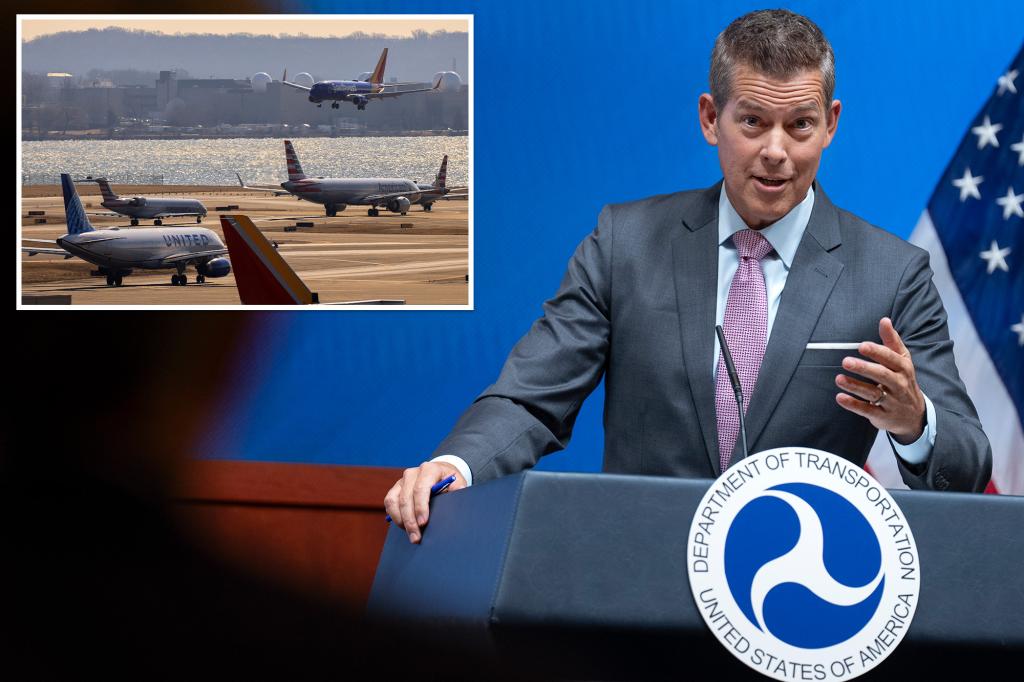Transportation Chief Sean Duffy Condemns Recent DC Airport Landing Incidents as ‘Unacceptable’
Transportation Secretary Sean Duffy has sharply criticized a series of aborted landings at Washington Dulles International Airport, calling the incidents “unacceptable” and demanding immediate action. Over the past six weeks, at least eight flights have executed go-arounds—aborted landing maneuvers—due to air traffic control errors and runway incursions. The pattern has raised alarms about safety in one of America’s most complex airspaces.
Spike in Go-Arounds Triggers Federal Scrutiny
Federal Aviation Administration (FAA) data reveals a 40% increase in go-arounds at Dulles compared to the same period last year. While the national average for aborted landings sits at 1.2 per 1,000 approaches, Dulles has recorded 3.7—three times higher than nearby Reagan National Airport. The incidents primarily occurred during peak travel hours between 7-9 PM, when air traffic congestion peaks.
“When multiple aircraft nearly miss each other on final approach, it’s not just procedural—it’s potentially catastrophic,” Duffy stated during a press briefing. “We’re launching a full review of air traffic control protocols and pilot communications.”
Experts Point to Staffing Shortages and Outdated Systems
Aviation safety specialists attribute the trend to compounding factors:
- A 15% vacancy rate among Dulles air traffic controllers
- Antiquated radar systems awaiting NextGen technology upgrades
- Increased commercial and private flight volume post-pandemic
“The margin for error shrinks exponentially when you combine inexperienced controllers with 1980s-era equipment,” said Dr. Alicia Chen, former NTSB investigator. “Dulles handles 70 daily international flights—each go-around burns 1,200 gallons of fuel and creates ripple effects across the East Coast.”
Airline Responses and Passenger Concerns
Major carriers have begun rerouting some flights to Baltimore/Washington International Airport as a precaution. United Airlines, which operates a Dulles hub, confirmed it’s retraining pilots on emergency climb procedures. Meanwhile, passenger advocacy groups report a 300% surge in complaints about delayed and diverted flights.
“Our team felt the plane lurch upward at 500 feet—the captain later said another jet hadn’t cleared the runway,” recounted frequent flyer Mark Tolbert. “This isn’t turbulence; it’s systemic failure.”
FAA Announces Immediate Corrective Actions
Within 24 hours of Duffy’s remarks, the FAA implemented temporary measures:
- Mandating 10-hour minimum rest periods for controllers
- Deploying senior staff from less congested facilities
- Prioritizing Dulles for $25 million in runway sensor upgrades
However, the National Air Traffic Controllers Association argues these are stopgap solutions. “We need 30% more staff and modernized software to prevent near-misses,” said union rep Carla Jimenez. “Controllers shouldn’t have to choose between overtime pay and passenger safety.”
Broader Implications for Aviation Safety
The Dulles incidents coincide with a 12% rise in serious runway incursions nationwide this year. Transportation analysts warn that without infrastructure investment, such events could become commonplace as air travel rebounds to pre-pandemic levels.
Secretary Duffy has pledged to fast-track the Metroplex airspace redesign project, originally slated for 2026. The $120 million initiative would streamline flight paths across the DC-Baltimore region using satellite-based navigation.
For concerned travelers, experts recommend:
- Monitoring FAA incident reports via the Aviation Safety Reporting System
- Choosing morning flights when controller fatigue is lowest
- Reviewing airline safety records before booking
As investigations continue, all eyes remain on Dulles—a critical test case for whether America’s aging aviation infrastructure can meet 21st-century demands. Stay informed by subscribing to our transportation safety newsletter for ongoing coverage.
See more CNN Headline


